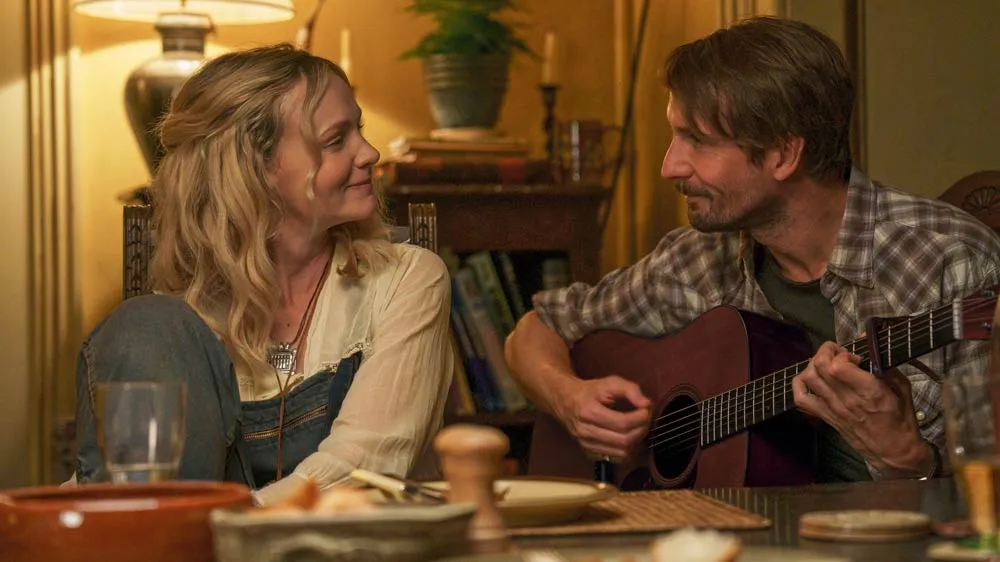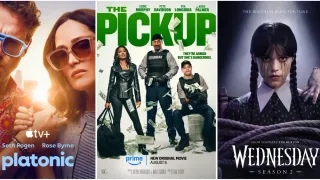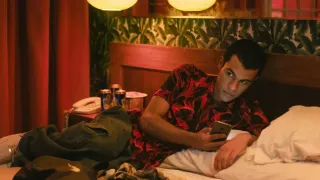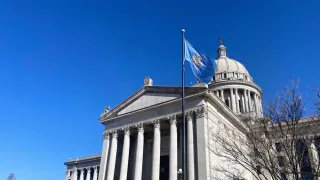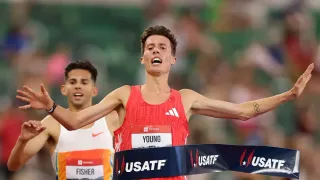August 21, 2016
Meet Museum Director Max Hollein
Sura Wood READ TIME: 5 MIN.
Max Hollein, the new director of the Fine Arts Museums of San Francisco, is outgoing and forward-thinking, brimming with confidence and an optimistic can-do attitude, qualities he'll need to lead the city's historic de Young Museum and the Legion of Honor.
Since the death of director John Buchanan in 2011, FAMSF has been in a state of administrative upheaval, with interim directors or none at all, and the departure of Colin Bailey, who left the post in April less than two years after he arrived for a job in New York. They've also been plagued by low morale, staff resignations and firings, allegations of misappropriation of funds, a pending investigation by the state attorney general's office and a spate of bad press.
The latest, an article that appeared earlier this month on the front page of The New York Times arts section, detailed the conflict between the board and the museums' embattled board president and CEO, Dede Wilsey. According to the Times article, whether she'll relinquish her roles and/or remain on the board won't be resolved until October.
Into the breach comes Hollein, who impresses as a man equal to the task before him, though given the long lead time required for mounting exhibitions, his impact in the short term will mostly be felt in terms of professional style and internal reorganization.
Born and raised in Vienna, Hollein, 47, graduated with parallel Masters degrees in art history and business administration before launching his career at the Guggenheim in New York. Prior to assuming his duties in San Francisco, he was director of three museums in Frankfurt, Germany: The Schirn Kunsthalle, a non-collecting contemporary art museum; the Stadel Museum, which has a collection of European art dating from the early 14th century; and the Liebieghaus Sculpture Collection. Newly settled into his home in Noe Valley with his wife, Nina Hollein, an architect-turned-fashion designer, and their three children, he officially took the reins June 1. "It's certainly a very invigorating time," he says. The following are edited excerpts from our recent conversation.
Sura Wood: Why is FAMSF a good fit for you, and vice versa?
Max Hollein: I'd been running museums in Frankfurt for 15 years, but it was a moment for a change and a different direction. So I opted for not doing the obvious and going to one of the main museums in Europe, but instead, coming to a city where I feel there is such a great momentum. It's one of the most beautiful cities in the world, but it also has a lot of opportunities as well as challenges. That's true both for the city and the institutions I'm running. I get my energy and to some extent my satisfaction from working in situations where I feel my leadership and direction can make a difference in going to the next level and moving forward. I've run three diverse institutions simultaneously, so I'm used to multi-tasking, and I bring a broad network of connections and constituencies in the art world and museum scene.
To many in the art world, especially in New York, San Francisco is regarded as a provincial backwater. Was that a concern for you in coming here?
It wasn't my perception that it's either provincial or a backwater. San Francisco is one of the most interesting urban environments you can live in. The whole world is looking at San Francisco right now. You have great cultural undercurrents, a fantastic history, and also a great history of philanthropy. You have institutions that are significant and continue to thrive. I can't see any signs of it being provincial or conservative.
For a long time the Fine Arts Museums have had an identity problem in terms of how the public perceives them. Your thoughts?
Your analysis is right in the sense that the profile of the FAMSF per se is much wider and more eclectic than a museum devoted to modern and contemporary art, for instance. It could be seen as confusing, but I see it as a virtue. Our goal and mission is to develop a distinctive identity for each of these two institutions through how the art and culture is presented. What we're working on is to have - like an editor of a magazine - one concise voice or perspective.
FAMSF has been criticized for its reliance on blockbuster shows and touring exhibitions. Will you be putting in motion exhibitions generated by in-house curators?
Definitely. You would just need to look at the programming I did in Frankfurt. The great thing is that you have a fantastic group of curators here.
You arrive at a time when revelations of internal turmoil are being played out in the press and the reputation of FAMSF is suffering in a very public way. How do you set about rehabilitating, if you'll pardon the term, the image and stature of the museums under these circumstances?
I understand what you're saying. Obviously, the media reports are not fruitful, but I think the Fine Arts Museums have a great reputation. They're very beloved. I think our biggest concern and one of the reasons I came is we need to focus not only on the external perception, but also on what the museum is and should be about.
One of the knocks on Ms. Wilsey is that she assumed too much power. How much authority will you actually have to lead and implement your plans?
Everybody who knows me knows that I'm a director who's deeply involved in all aspects, who both manages and programmatically develops the institution. I wouldn't be coming here without the understanding that I would be fully responsible and fully in charge.
Your father, Hans Hollein, was a highly influential postmodernist, Pritzker Prize-winning architect, and your mother a fashion designer. How did growing up in a creative, artistic household shape you?
Our family life circled around the work of my father. It was an artistic environment where almost all of my father's friends were artists, architects, actors, etc., and I was schlepped to exhibitions. My knowledge about art and art history and being able to work with artists stems from that family background. On the other hand, I developed a very keen interest in business, which was a complete surprise to my parents. They would have loved me to become an artist. My revolution against them was to study business.
Which artwork would you most like to own for yourself if you could?
From my childhood on, I had a deep, almost reverence for the work of Francis Bacon. It has an emotional, transformational quality that might speak to a teenager's mentality, but I've maintained a fascination with it.
